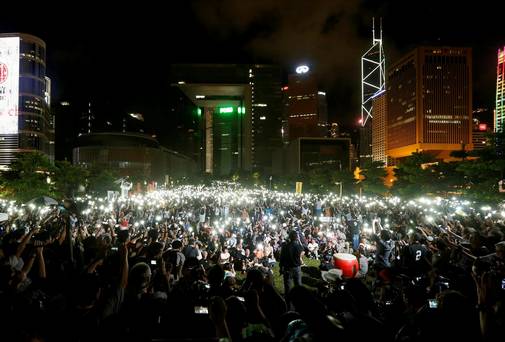
Socialist Ireland edges out capitalism to the margins
September 7, 2014
Europe must not neglect the Western Balkans
September 7, 2014Design company DDG may be based in Brewers Hill, but it never let Baltimore define it.
Founded in 1979, the firm’s focus is commercial work — shopping centers, movie theaters and hotels, including landmark mixed-use developments, such as the Easton Town Center near Columbus, Ohio. The recession pushed DDG, which generates annual revenue of $10 million to $12 million, to double down on its global practice, which today represents more than 90 percent of its billings.
Today DDG’s 60 employees — down from 87 in 2011 — come from 20 countries and collectively speak more than 25 languages. The firm claims work in more than 50 countries —including China, Indonesia, Turkey, Saudi Arabia, Myanmar and Iraq. Despite U.S. tension with Russia, the firm remains involved in negotiations for developments there. Projects in Erbil — a Kurdish city close to recent U.S. airstrikes — remain in play.
“We usually joke we’re the best-kept secret in Baltimore because we are not in that inner circle here,” said CEO Ahsin Rasheed, a native of Pakistan, who first came to the U.S. in 1981 as a student, started at DDG as employee No. 17 in 1987 and became a U.S. citizen in 1995, the same year he became a partner at the firm. “We are more known all over the world than known in Baltimore.”
Rasheed, who became CEO in 2011, said DDG seeks to act as an adviser for clients, emphasizing master planning and “design with a capital D.” That means eschewing some of the less “sexy” services often performed by planning and architecture firms, such as technical and construction documents.
“We are not for everybody,” he said. “We come up with unique ideas. That is the purpose of DDG.”
In the Baltimore area, the firm’s work includes the original Belvedere Square, the Egyptian-themed movie theater in Arundel Mills, the Laureate building in Harbor East and plans for National Harbor.
The interview was edited and condensed.
How did you get to Baltimore?
I was interviewed by some senior folks from DDG and I got a job offer and then I found out where Baltimore is. I did not have clue where Baltimore was. I went to a library found a map and said, “OK, let’s go.” I started at DDG in August 1987.
Baltimore actually has some interesting logic where I come in. Minnesota, where I was coming from, was too cold. I knew very seriously I was not going to survive there. I saw pictures. The Inner Harbor was very attractive and, most importantly, when I looked at the cultural demographics of Baltimore, that intrigued me a lot. I had heard that East Coast cities are much friendlier [to foreign students] than the middle of the USA. People would be much more receptive. I would not stick out like a sore thumb like I would in Minnesota, with all the blond-haired, blue-eyed Scandinavians.
Coming from a place like Pakistan, where the opportunities are limited and everything goes with seniority and who do you know, whose uncle do you know to get the job there — here, there was no such thing. I always say that if you work hard, if you have the will to succeed, USA is the place for you because you can be anybody you want to be. Nobody’s going to stand in your way, and that truly is the case of my life.
Is there more money abroad for design, conceptual, big-vision commercial plans?
USA — I love the place, it’s my home — USA has very drastically lost the leadership in bigger thinking in design. USA has become more Wall Street-oriented. Most of the bigger real estate companies or development companies have turned into [real estate investment trusts]. Everybody is looking at their spreadsheets. Everybody is looking at quarterly results, [squeezing] out profits so they can look like they are marvelous to their shareholders. USA has never been known for excellence in design. It’s always been Europe. We perfect it and make it better and we mass produce the hell out of it.
We see amazing opportunities. Clients ask us, they say, “Best project you guys can design.” And I have not heard that from a client in the USA. USA, they’re talking about spreadsheets. And everybody’s talking about how we gotta worry about these variances, this zoning. As opposed to … “Show us what you have. If we are happy, we are convinced, we’ll get it done.”
When you’re offered a project in Iraq or Saudi Arabia, are there risks there? Do you ever get flak from colleagues or competitors for working in some of these authoritarian places?
There’s no risk. The only risk is people would say, “Would you get paid?” My theory is very simple. You do a good service … they pay you. They’ll always pay you. We have more issues with getting money from U.S. clients who have a lot of lawyers and they figure out always a way not to pay you than with our foreign clients. Foreign business is all about relationships. If they like you, they trust you. They shake your hand, they give you an embrace, you’re in. There’s a lot of pride in a handshake.
To me, it’s no big deal. We are providing design services. To me, this is a humanitarian service. Those countries, they have physical environments … which could use some more aesthetical help and we are there to help them, to make a better place.
Where do you see the company in five years?
We are very much considered globally a center of excellence of retail and mixed-use development of shopping centers. Now my mission is to create a center of excellence in other services, and … the target is residential.

